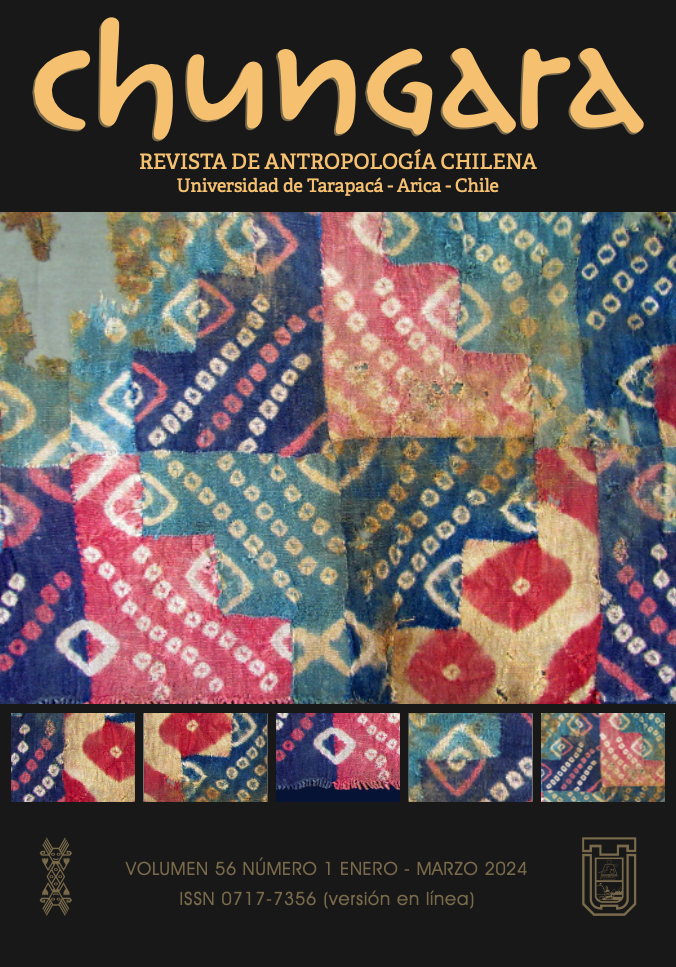Written by Super User. Posted in Papers - English
OCCUPATIONAL TRAJECTORIES AND LOCAL SPACES DURING THE CERAMIC PERIODS IN THE PUANGUE AND ANGOSTURA VALLEYS, CENTRAL CHILE
TRAYECTORIAS OCUPACIONALES Y ESPACIOS LOCALES DURANTE LOS PERIODOS ALFAREROS EN LOS VALLES DE PUANGUE Y ANGOSTURA, CHILE CENTRAL
Lorena Sanhueza, Itaci Correa, Fernanada Falabella, Flavio Ardiles, Brandi L. MacDonald y Michael D. Glascock
Pre-Hispanic societies of the Ceramic Periods in Central Chile have been described in archaeology as low-scale societies. Here we propose that the locality or microregion are relevant spatial scales of analysis to address the economic, social, and political life of these groups. A comparative analysis of two local-scale areas, Angostura and Puangue-Pomaire, reveals that although both areas share a general sequence and a historical process at a regional level, local trajectories differ in terms of temporality, dynamics, and characteristics. The settlement of Early Ceramic groups occurs at a much later date and is less prominent in Puangue-Pomaire, which shows evidence of a much stronger Inca and historical presence. On the other hand, a neutron activation analysis of domestic pottery sherds reveals that some knowledge, such as the sources and/or recipes of pottery raw materials, is shared on a small scale in both cases, but varies according to the characteristics and possibilities of the local landscape, which involves areas of no more than 10 km.
Print
Email
Written by Super User. Posted in Papers - English
BURIAL METHODS, AGE PROFILES, CHRONOLOGY, AND DIET OF HUNTER GATHERERS FROM THE CENTRAL PAMPEAN DUNEFIELDS: LAGUNA DE LOS PAMPAS SITE (PAMPAS REGION, ARGENTINA)
MODALIDAD DE ENTIERRO, EDAD, CRONOLOGÍA Y DIETA DE LOS CAZADORES RECOLECTORES DEL CAMPO DE DUNAS DEL CENTRO PAMPEANO: EL SITIO LAGUNA DE LOS PAMPAS (REGIÓN PAMPEANA, ARGENTINA)
Mariela E. González, Pablo G. Messineo, Narella Marini y Gustavo G. Politis
At the Laguna de Los Pampas archaeological site located in the Central Pampean Dunefields, eight human burials have been recorded in two sectors of the shallow lake. In this paper, we analyze this record through different lines of evidence. We present the results obtained and discuss the implications of each for interpreting the occupational dynamics of the area by hunter-gatherer groups during the Holocene. Our results indicate evidence of human occupation during the Early and Middle Holocene, with a stronger presence for the latter period; the recorded burial method is primary in all determined cases. On the other hand, the identification of an oblique tabular modification in one individual from the Middle Holocene (~6000 years BP) represents a novel finding since it would be the earliest record of this type of cranial modification for the Pampas region. The analyzed evidence suggests that Laguna de Los Pampas may be the product of periodic reoccupation of the site over time (Early and Middle Holocene), possibly motivated by the presence of outstanding landscape features, such as the lake and the resources it provided.
Print
Email







